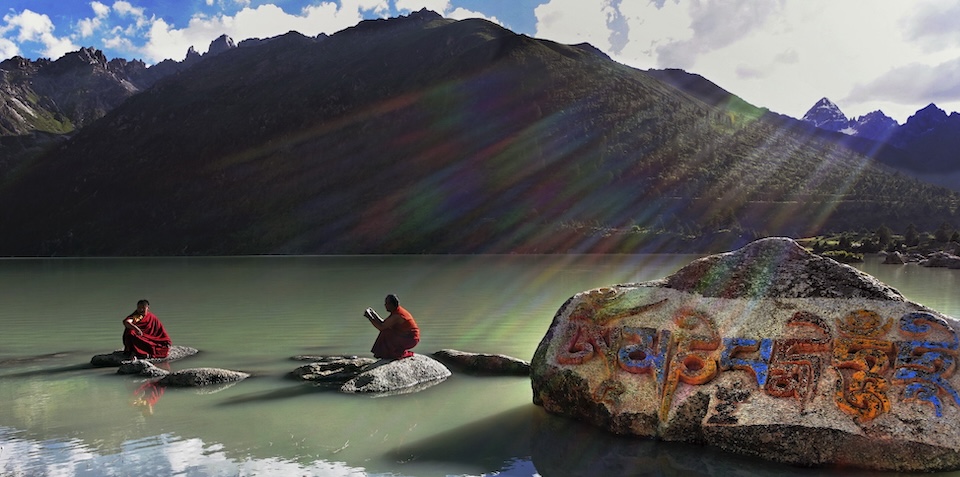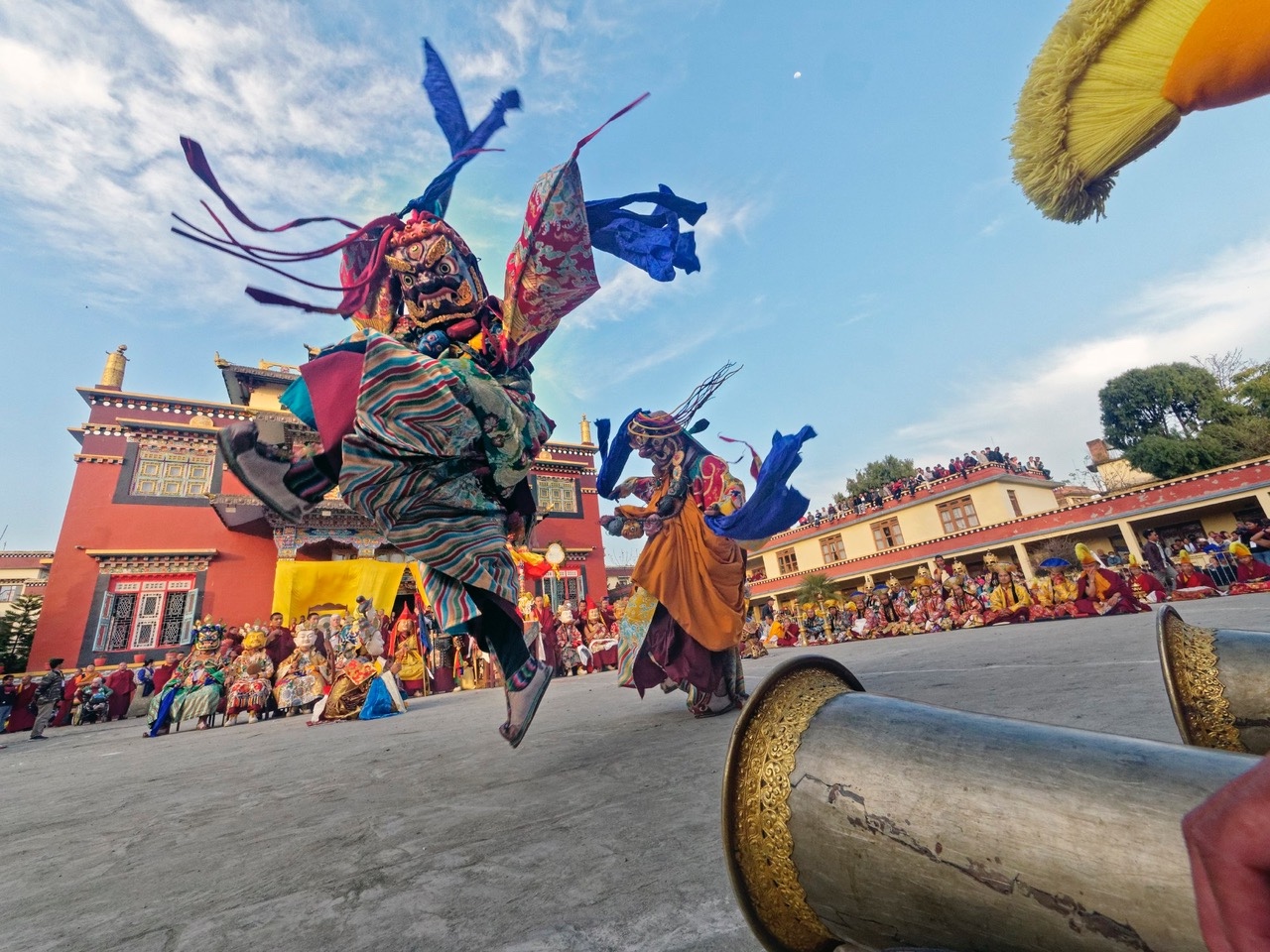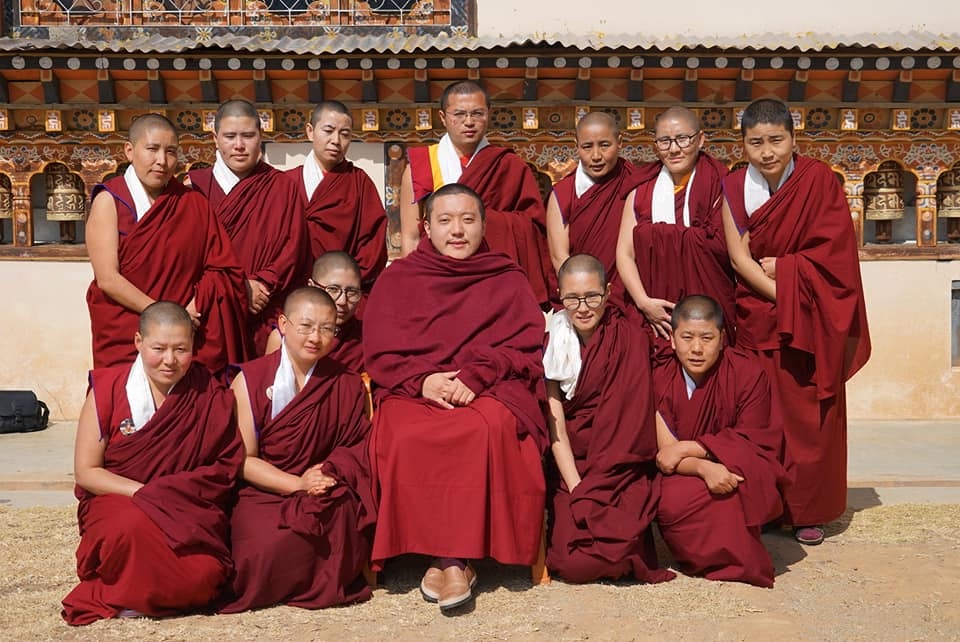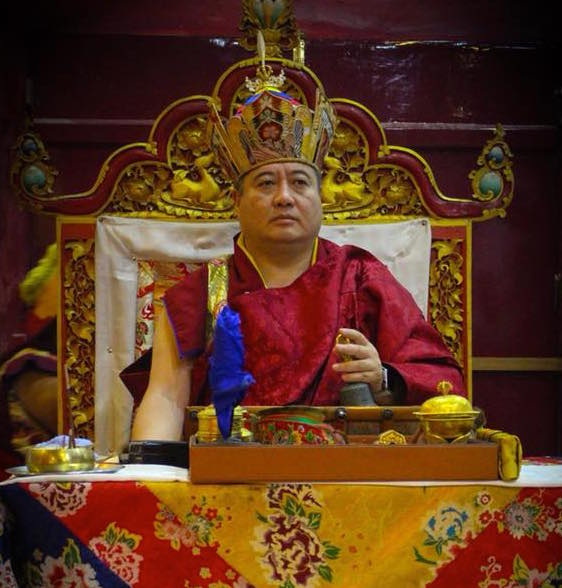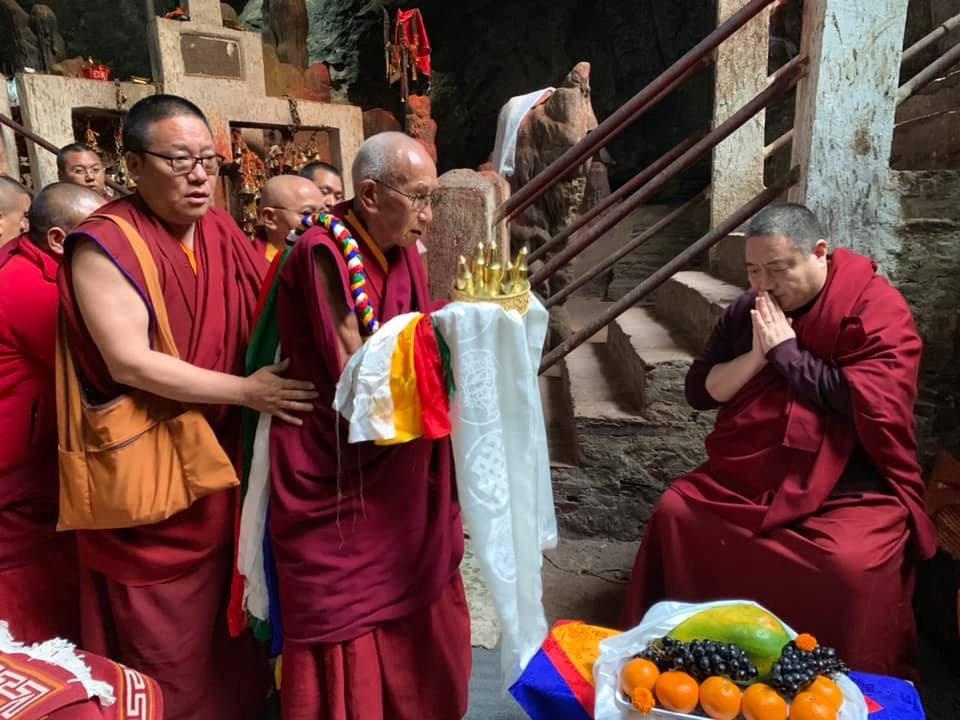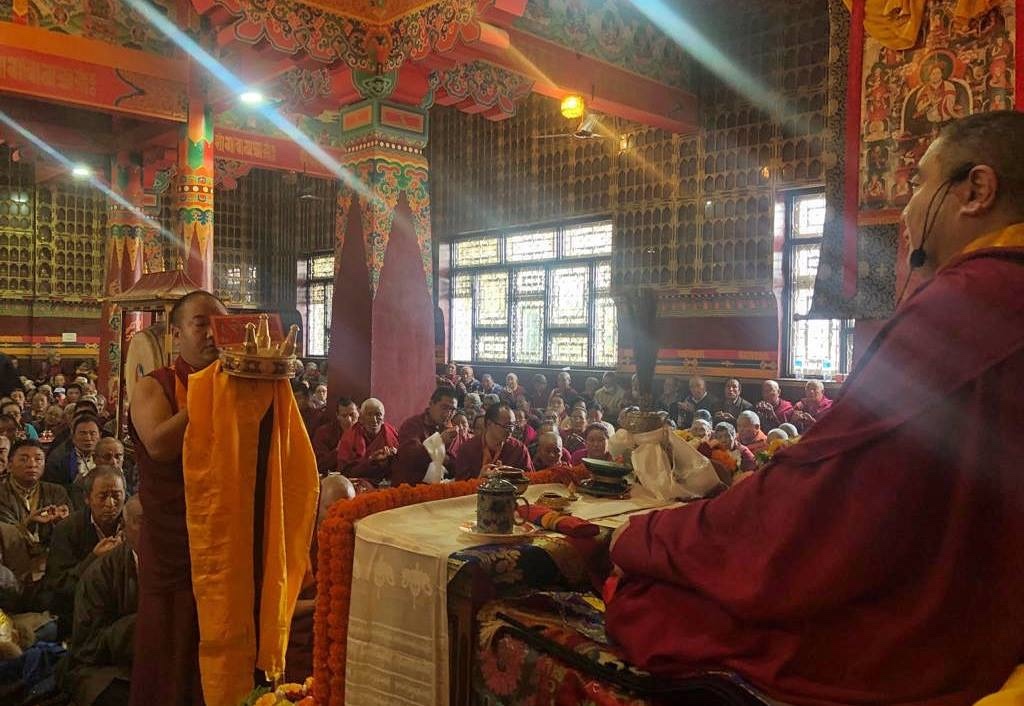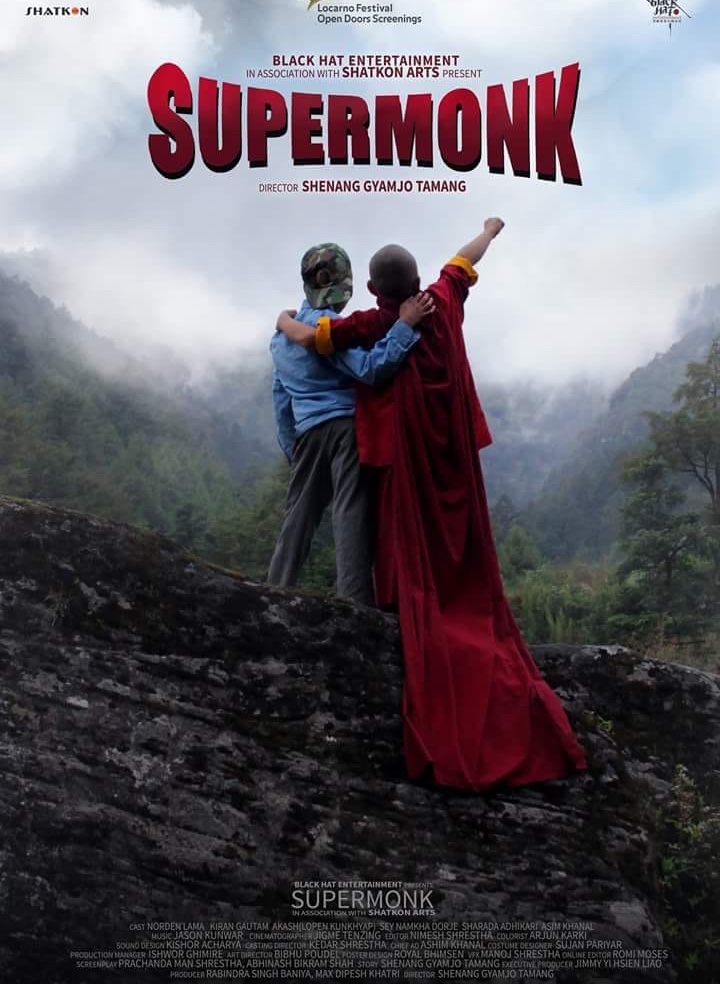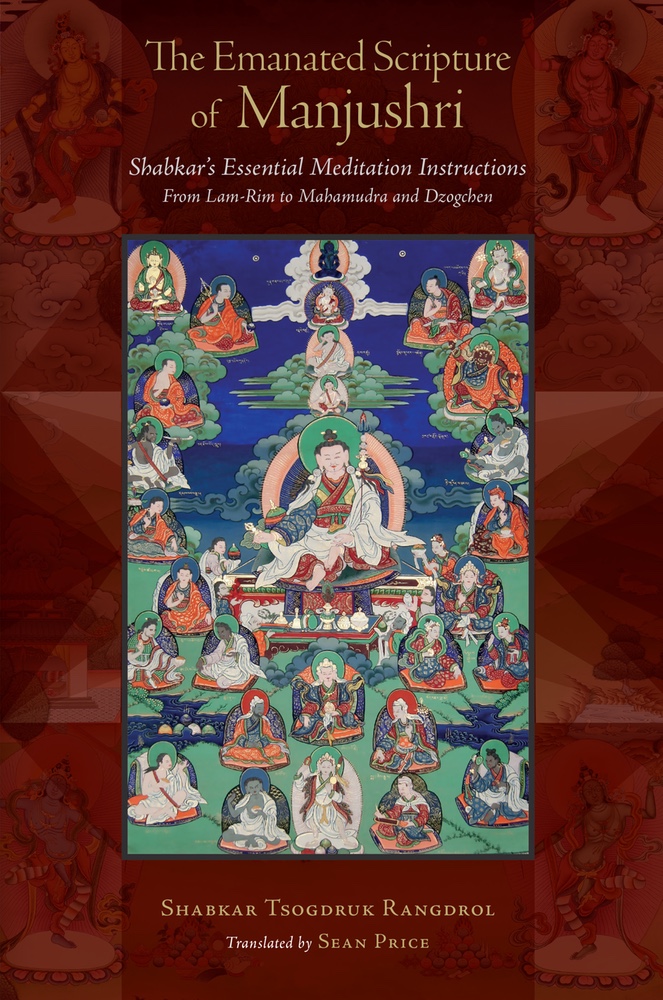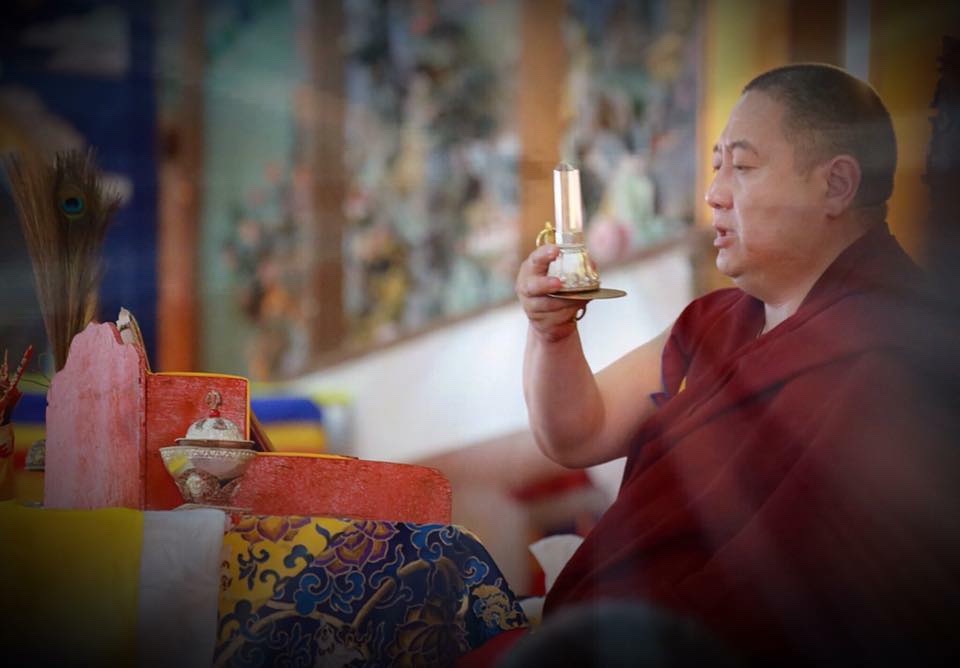#25 – March 2019 Newsletter
Quick links in this edition:
A Milestone for the Shechen School
Season of Blessings
Groundbreaking Work by The Shechen Research Unit
Teacher’s News
New Works by Shechen Monks
Update on April Transmissions in Nepal
Other Links
A Milestone for the Shechen School
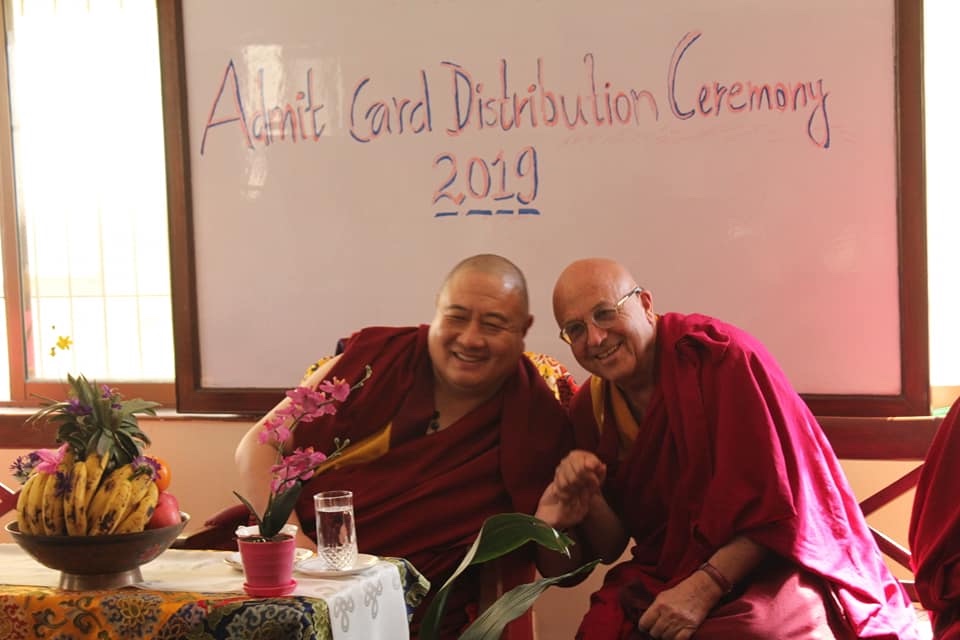 After the conclusion of the annual winter ceremonies and dances, graduation day arrives! Students from the Shedra, Dratsang, and Tsering Art School gather to receive their report cards and diplomas from Rabjam Rinpoche and senior Shechen Khenpos. This year the joyous event was held in the temple.
After the conclusion of the annual winter ceremonies and dances, graduation day arrives! Students from the Shedra, Dratsang, and Tsering Art School gather to receive their report cards and diplomas from Rabjam Rinpoche and senior Shechen Khenpos. This year the joyous event was held in the temple.
Later that day, a historical event took place in the Shechen School. For the first time ever, the Class 8 students will take the Nepali national board exams. This means that they will be the first Shechen monks to graduate to Class 9, a significant accomplishment for the students and the school as a whole.
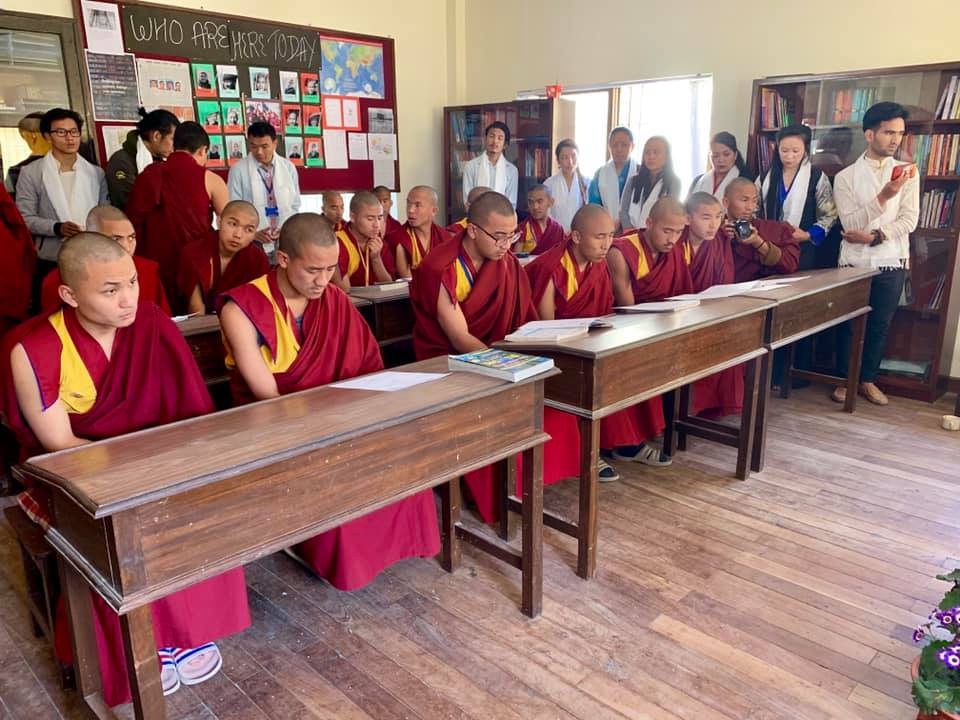 Rabjam Rinpoche gave out the exam cards. Rinpoche, Matthieu Ricard, Khenpo Pema Sherab, and other khenpos congratulated the students for their hard work and encouraged them as they look forward. The exam will take eight days to complete under the supervision of the government, and the results will be made public.
Rabjam Rinpoche gave out the exam cards. Rinpoche, Matthieu Ricard, Khenpo Pema Sherab, and other khenpos congratulated the students for their hard work and encouraged them as they look forward. The exam will take eight days to complete under the supervision of the government, and the results will be made public.
Until this year the school did not go beyond the eighth grade and was classified as an elementary school. The Nepal Government recently certified the school to include Classes 9 through 12, thus making it a Secondary School (high school). In 2022 the graduates will earn a high school diploma. This is very exciting news as it also paves the way for possible future accreditation for the shedra.
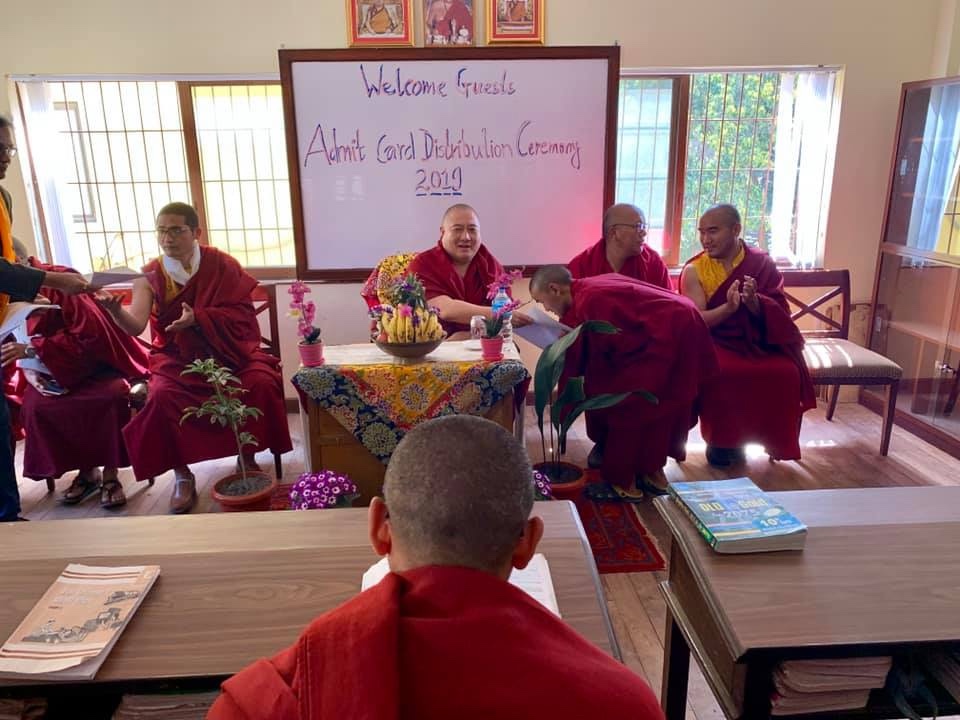 This has been an arduous process and we are delighted that the government has approved the school and respected its work. This dream has come true because of the vision of Rabjam and Khyentse Yangsi Rinpoche, the encouragement and help from our senior khenpos, and the hard work and dedication of our distinguished principal, Jhabindra Subedi.
This has been an arduous process and we are delighted that the government has approved the school and respected its work. This dream has come true because of the vision of Rabjam and Khyentse Yangsi Rinpoche, the encouragement and help from our senior khenpos, and the hard work and dedication of our distinguished principal, Jhabindra Subedi.
Some changes and improvements will have to be made to accommodate additional students and classes. The school will have to hire additional teachers and a new classroom building will need to be built in the already crowded compound. We are eager to begin this new educational adventure and look forward to your support.

Some changes and improvements will have to be made to
A Season of Blessing
Every year, immediately preceeding Losar, the lunar new year, drupchen season begins. Drupchen ceremonies are performed by the tulkus, khenpos, lopons, and the full assembly of 400 monks residing at the monastery. It is a great celebration that has been held annually since the 1980’s in accordance with Dilgo Khyentse Rinpoche’s vision.
The word “drupchen “can be translated as “vast accomplishment”. It is a form of intensive group practice involving the creation of a mandala, visualization, chanting, mudras and music. Each nine or 10-day drupchen includes an “establishing the ground” ceremony and a concluding day of dedication of merit and a butter lamp ceremony (Marme Monlam). During the other days, chanting and meditation continues for 24 hours a day, with a smaller group of monks continuing the mantra recitation throughout the night.
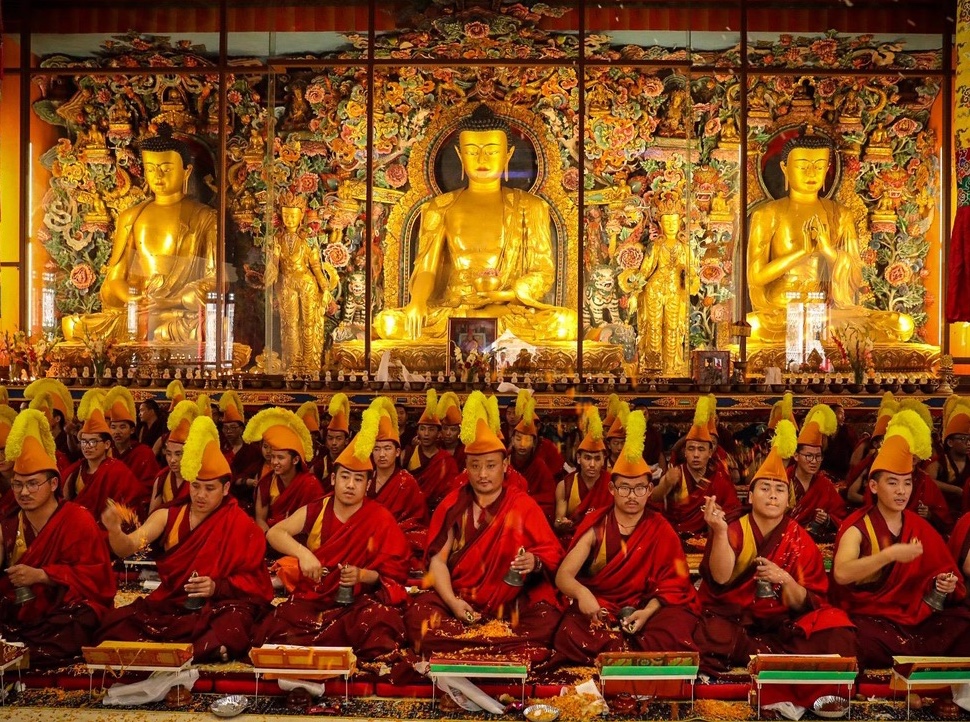 To remove obstacles at the end of the year the Yamantaka Drupchen is performed. After losar, a series of drupchens begins with the purification practice of Minling Dorsem Vajrasattva. The Vajrasattva drupchen is performed in the main temple while simultaneously four other drupchös are performed in the smaller temples: Shinje (Mindroling), Kabgye Deshe Dupa, Vajrakilaya, and Pema Tse Nyingtik, all of which are terma, or treasure teachings.
To remove obstacles at the end of the year the Yamantaka Drupchen is performed. After losar, a series of drupchens begins with the purification practice of Minling Dorsem Vajrasattva. The Vajrasattva drupchen is performed in the main temple while simultaneously four other drupchös are performed in the smaller temples: Shinje (Mindroling), Kabgye Deshe Dupa, Vajrakilaya, and Pema Tse Nyingtik, all of which are terma, or treasure teachings.
These are followed by the Tsokchen Duepa drupchen and, simultaneously five Ka’ma drupchens are performed. This year the Narak Dongtrug (liberation from the depths of hell) was presided over by Changling Tulku in the Tara shrine room; Gyuthrul Shiwa (Peaceful Form of Illusory Net) was presided over by Tulku Jigmed Samten in the library; Gyuthrul Throwo (Wrathful Form of Illusory Net) was lead by Dorzin Lungrig Nyima in room with the reliquary stupa of Dilgo Khyentse Rinpoche, and Yangdag Lhagu (Nine VIshuddha Heruka) presided over by Tulku Norbu in the Guru Lhakhang.
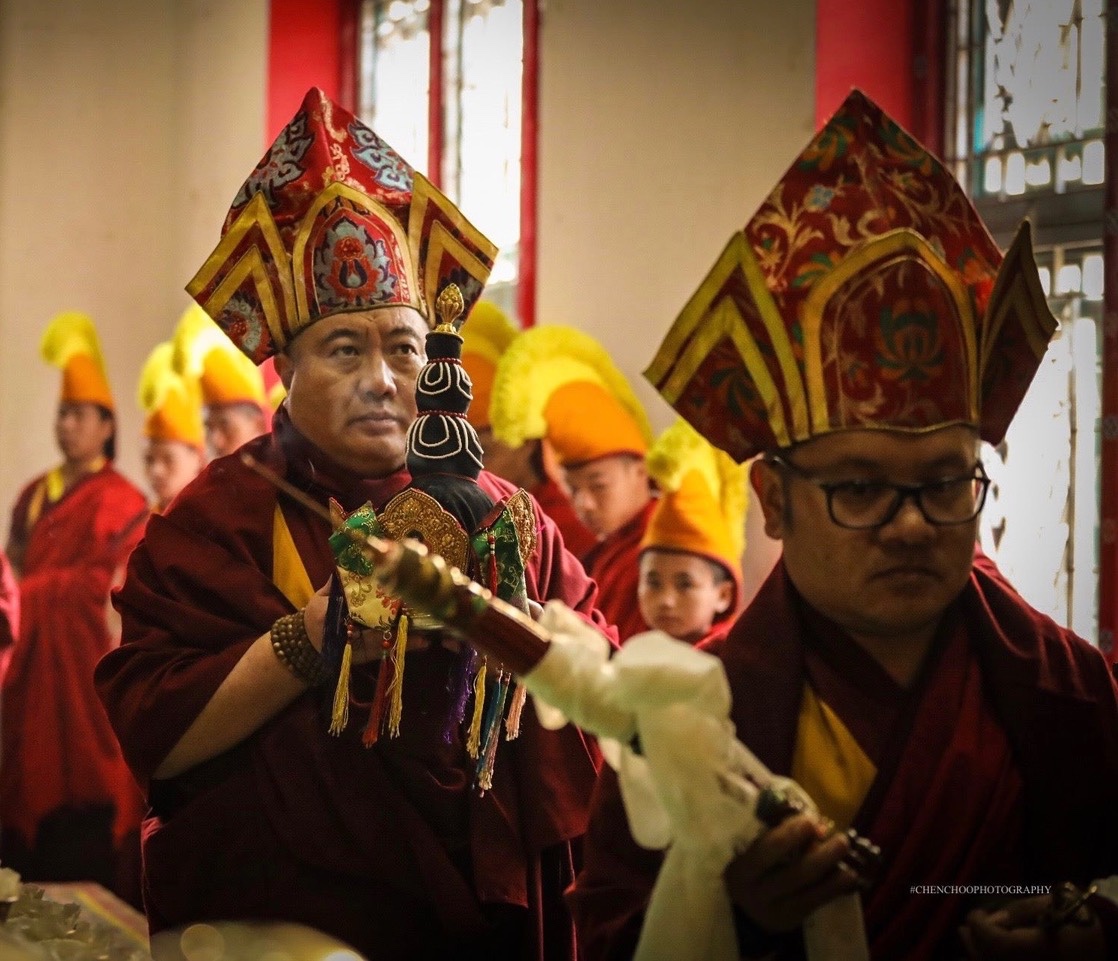 Finally the Lama Sangdu practice begins. Included in it is the Great Tsechu Cham, or Dance Festival of the 10th day of the first lunar month. Everyone at the monastery is involved in the preparation or performance of the cham, including the children from the Shechen School. The Great Tsechu is a spiritual and artistic celebration of the arrival of Guru Padmasambhava, including his eight manifestations, his consorts, 16 Vajra Herukas, and entourage. It is an incredible display, with elaborate costumes, sacred dance and music, attracting people from all over the world. This year the celebration took place under a beautiful blue sky. It is especially moving at the end when the public is invited up to offer scarves to the figure of Guru Padmasambhava and the other manifestations.
Finally the Lama Sangdu practice begins. Included in it is the Great Tsechu Cham, or Dance Festival of the 10th day of the first lunar month. Everyone at the monastery is involved in the preparation or performance of the cham, including the children from the Shechen School. The Great Tsechu is a spiritual and artistic celebration of the arrival of Guru Padmasambhava, including his eight manifestations, his consorts, 16 Vajra Herukas, and entourage. It is an incredible display, with elaborate costumes, sacred dance and music, attracting people from all over the world. This year the celebration took place under a beautiful blue sky. It is especially moving at the end when the public is invited up to offer scarves to the figure of Guru Padmasambhava and the other manifestations.
The following day the Lama Sangdu practice concludes in the early morning followed by the empowerment attended by hundreds from the community. This year Rabjam Rinpoche presided over all the drupchens and Gyalse Tulku (as he has for many years) was the Vajra Master. We hope that one spring you can also be with us to experience this powerful season of blessings.
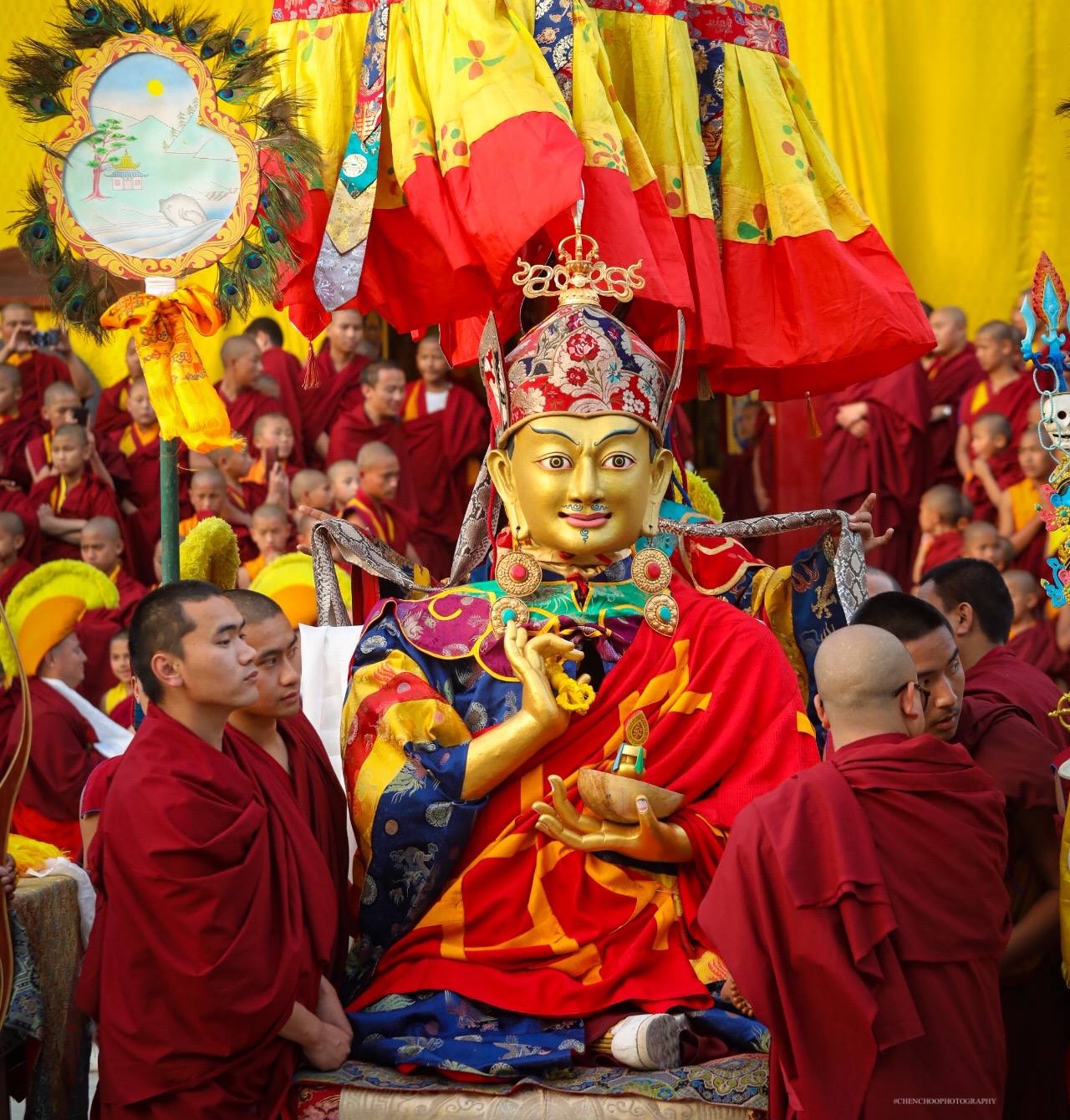
Groundbreaking Work by the Shechen Research Unit
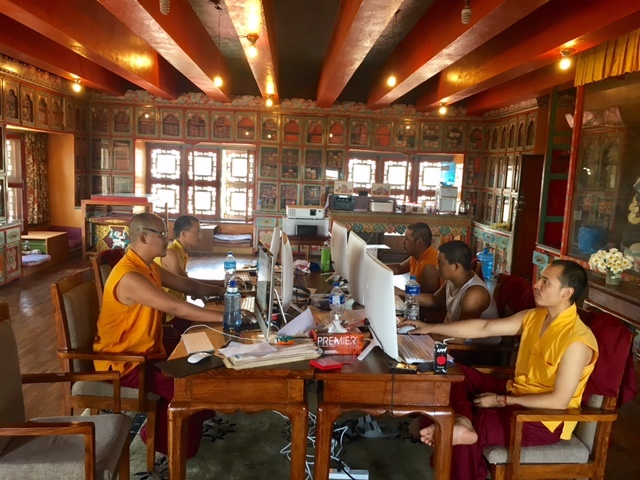 In 2017, Shechen Monastery became part of an innovative collaboration between Western academia and traditional Buddhist philosophical and textual studies.
In 2017, Shechen Monastery became part of an innovative collaboration between Western academia and traditional Buddhist philosophical and textual studies.
To bridge the gap between western academia and Tibetan scholars, Khyentse Foundation has been a sponsor of the Academic Research Program Initiative (ARPI) in collaboration with the University of Hamburg to foster research activities in Himalayan Buddhist monastic colleges (shedras).
Professor Dorje Wangchuk and Dr. Orna Almogi from ARPI conduct progressive workshops that introduce western academic research methodology to Tibetan scholars who are not familiar with these approaches.
As a result of these workshops, Shechen Monastery, Dzongsar Khyentse Chokyi Lodro Institute, and Namdroling Monastery set up their own research departments to lay the foundation for enduring solid research activities and collaborative projects with international institutions.
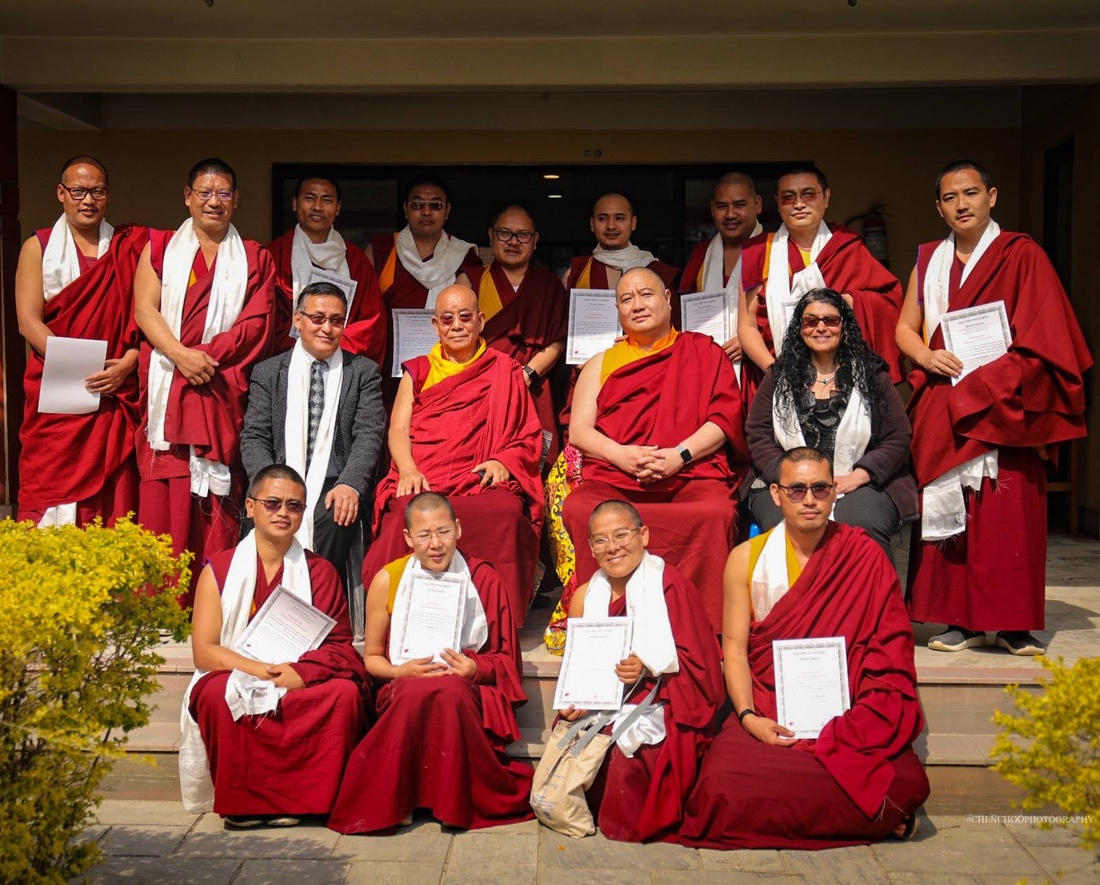 In March, Shechen Monastery hosted a 14-day workshop entitled “Tibetan Buddhist Textual Scholarship: Means and Methods of Research (Level 2)”. This workshop was organized and conducted by the Tibetan Buddhist Textual Scholarship at the Department of Indian and Tibetan Studies at the University of Hamburg, and was the second hosted by Shechen Monastery. It included participants from several monastic research centers including Dzongsar Institute Research Center, Ngagyur Nyingma Research Institute, and the Shechen Research Unit along with several individuals from other institutions.
In March, Shechen Monastery hosted a 14-day workshop entitled “Tibetan Buddhist Textual Scholarship: Means and Methods of Research (Level 2)”. This workshop was organized and conducted by the Tibetan Buddhist Textual Scholarship at the Department of Indian and Tibetan Studies at the University of Hamburg, and was the second hosted by Shechen Monastery. It included participants from several monastic research centers including Dzongsar Institute Research Center, Ngagyur Nyingma Research Institute, and the Shechen Research Unit along with several individuals from other institutions.
Five Shechen Shedra graduates, Tulku Urgyen Dorje, Lopon Choying Rangdrol, Lopon Rupchandra, Lopon Ngawang Tenzin, and Lopon Ngawang Gyamtso, formed the Shechen Research Unit. The group has been working hard during the last two years and has presented its findings at other gatherings.
At the beginning, the monks were apprehensive about learning new computer programs and research techniques and working in English. However, they have developed confidence and are now happily involved in this fascinating research that opened up a whole new world of discovery for them. We look forward to reading the results.
Teacher’s News
Dilgo Khyentse Yangsi Rinpoche:
At the beginning of December, Dilgo Khyentse Yangsi Rinpoche joined Rangjung Yeshe Oddiyana in Singapore following the completion of the Ushnishavijaya Puja and offered words of advice to those gathered.
In February, Yangsi Rinpoche travelled to Bhutan. The nuns at Shechen Orgyen Chodzong Nunnery were thrilled that he visited them on the 2nd day of Losar. He congratulated the 12 nuns who had just completed their nine-year college course of Buddhist studies and philosophy. The nuns graduated with the equivalent of a lopon degree. There are very few shedras in Bhutan for women and we are very proud of their academic achievement.
Khyentse Yangsi also joined the nuns for the final day of the Vajrasattva drupchen. The nuns perform this drupchen concurrently with the one in Shechen Monastery in Nepal. In late February, Rinpoche presided over four days of the Barche Kunsel ceremonies, which were held next to the Dilgo Khyentse Memorial Stupa in Tsatsam Chorten.
Shechen Rabjam Rinpoche
Rabjam Rinpoche has followed a busy schedule since our last news update as he continues to travel to teach in remote Himalayan Buddhist areas. See a video of Rinpoche’s visit to Jumla in west Nepal as reported in the last newsletter.
Also in November, Rinpoche travelled to Mindrolling Monastery in Dehradhun and to Thubten Choling, Trulshik Rinpoche’s monastery, in Solokhumbu, Nepal, and Selo, a remote area near Mt. Everest, giving teachings and empowerments to local devotees. Rinpoche travelled to Malaysia in early December where he performed the opening ceremony of the new Simdha Buddhist Center.
From December 6th to 16th, Rinpoche lead the 8th year of the Shechen Bodhgaya Seminar. There are about 50 international students who return to Bodhgaya annually to study and practice following Dilgo Khyentse Rinpoche’s treasure teachings under Rabjam Rinpoche’s guidance. Lama Lungrik Nyima and Khenpo Gyurme Dorje also gave teachings translated by Sean Price.
In January, Rinpoche visited the sacred land of Pemako. Pemako means ‘shaped like a lotus’ and is said to resemble the body of Vajravarahi, lying on her back. The head to the navel lies in Tibet, and the navel to the feet lies in India. Pemako is a hidden land, or beyel, a place of Dakinis, that was blessed by 8th century Padmasambhava, also known as Guru Rinpoche.
At the request of Khenpo Tsering Dorje, Rinpoche visited his new monastery Ngesang Dongak Jangchup Dhargye Ling. There Rinpoche gave the complete transmission (empowerment and oral transmission, or lung) of the Root Volumes of the Longchen Nyingtik along with the empowerments of The Peaceful and Wrathful Deities according to the treasure revelation of Karma Lingpa (Karling Shitro), and Vajrakilaya and Amitayus according to the treasure of Ratnalingpa.
From January 23rd through March 17th, Rinpoche presided over the annual drupchen season at Shechen Monastery in Nepal. In February, Rinpoche travelled to Maratika Cave at the invitation of Tengpoche Rinpoche. He offered Rabjam Rinpoche a tenshuk, which is a long life practice that involves making offerings to a teacher and requesting them to remain long in this world for the benefit of all beings. At the end, Rabjam Rinpoche offered a long life empowerment to the public, which was attended by about 1000 people.
In March, Rinpoche conferred a long life empowerment to the Sherpa Community at Sherpa Gompa, in Kathmandu, in celebration of their completion of the recitation of 1 million Vajra Guru mantras every year for the past 12 years, as had been requested by His Holiness Trulshik Rinpoche. Later that month, Rinpoche presided over the 2-day Shechen Annual General Meeting at Shechen Monastery in Nepal.
Immediately following the conclusion of the annual drupchens, Rabjam Rinpoche left for Croatia to lead the 8th year of the Shechen Croatia Seminar for International students who are engaged in the same 9-year practice and study program as the sister Shechen Bodhgaya Seminar.
<! — delete this line for summer 2019 newsletter – it’s here only for spacing. –>
<! — delete this line for summer 2019 newsletter – it’s here only for spacing. –>
Rabjam Rinpoche To Visit USA in Fall 2019
In October of 2019, Shechen Rabjam Rinpoche will be coming to the United States. Please email shechen@sprynet.com if you would like to attend the events in New York City: a talk on October 17 and the Pema Tse
Nyingtik empowerment on the 19th .
New Works by Shechen Monks
Supermonk
Khenpo Shelnang Mugam has been a monk at Shechen Monastery since he was seven years old. He has directed two international award winning short films. His new film, Supermonk, takes place during Nepal’s People’s Civil War. An 11-year-old monk encounters a rebel child soldier hiding in his monastery and an unexpected friendship blossoms between them. It received awards for Best Short Film in the War On Screen Film Festival (France), the Nepal Independent Film Festival, and the Audience Choice Award in Kimff & Yala International Independent Film Festival.
<! — delete this line for summer 2019 newsletter – it’s
A Nous La Liberté
by Matthieu Ricard, Alexandre Jollien,
Christophe André,
Matthieu Ricard’s new book continues his dialogue with a philosopher and a psychiatrist that began with In Search of Wisdom. À nous la liberté explores the topic of inner freedom and how it enables us to navigate the ups and downs of life. It is only available in French, but soon will be published in English and other languages.
<! — delete this line for summer 2019 newsletter – it’s here only for spacing. –>
The Emanated Scripture of Manjushri
by Shabkar Tsogdruk Rangdrol, translated by Sean Price.
Shechen monk Sean Price has been translating the texts and teachings of Dilgo Khyentse Rinpoche as well as for the oral teachings of Rabjam Rinpoche during the last 15 years. His latest translation is The Emanated Scripture of Manjushri by the great Tibetan yogi, Shabkar. Composed in 1815, this compendium of spiritual instructions is written in the form of questions and answers, alternating verse and prose, between Shabkar and his disciples. It presents instructions for traversing the entire Vajrayana path to enlightenment. Published by Shambhala Publications.
<! — delete this line for summer 2019 newsletter – it’s here only for spacing. –>
Update on the April Transmissions in Nepal
April 2019 Lungs
Shechen Rabjam Rinpoche will give the transmission (empowerment and reading transmission, wang/lung) of the collected writings of Rigzin Jigme Lingpa and Dza Patrul Rinpoche. In addition, at the request of many practitioners, Rinpoche has consented to give all the empowerments from the root volumes of the Longchen Nyingthik. The transmissions will be given from April 12 and will continue until April 29. Tulkus, Khenpos, Lopons, and Lamas are requested to register at the Shechen Office.
Other Links
For continuing news please regularly visit our website where you can sponsor a monk or nun, donate to one of our projects, request prayers and find new information and photos. Current photos and news can also be found on our Facebook page.
